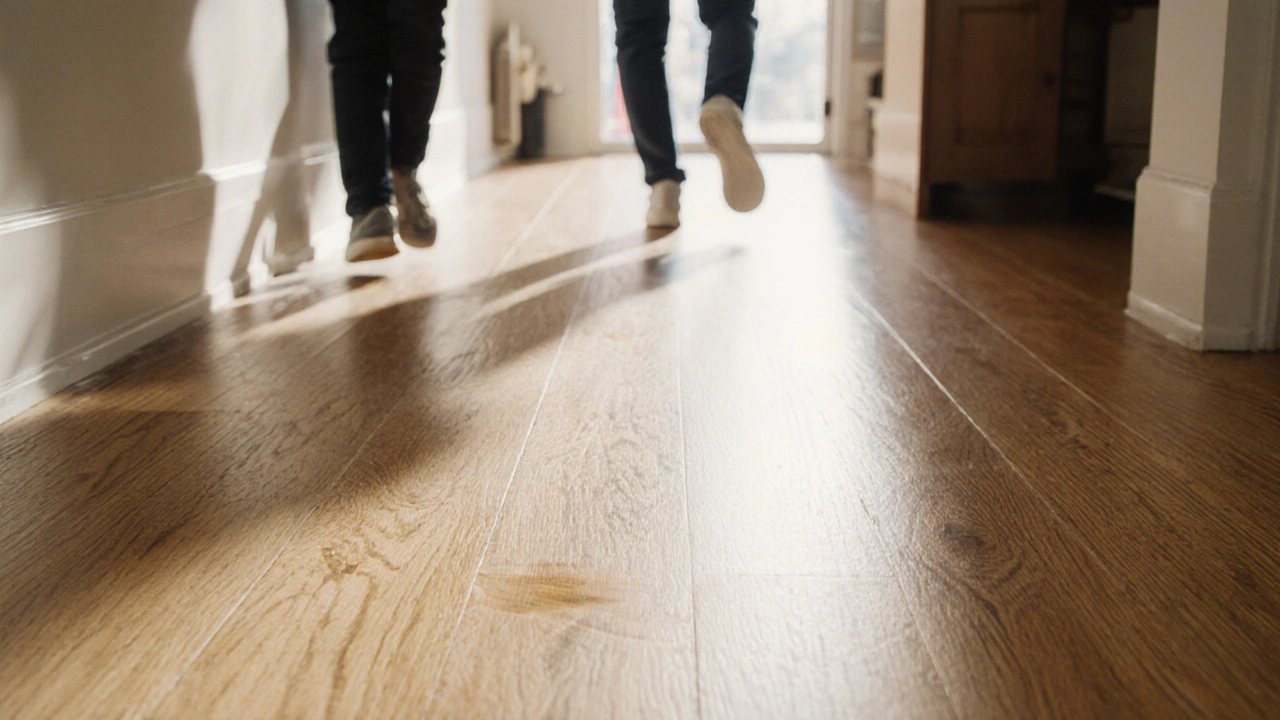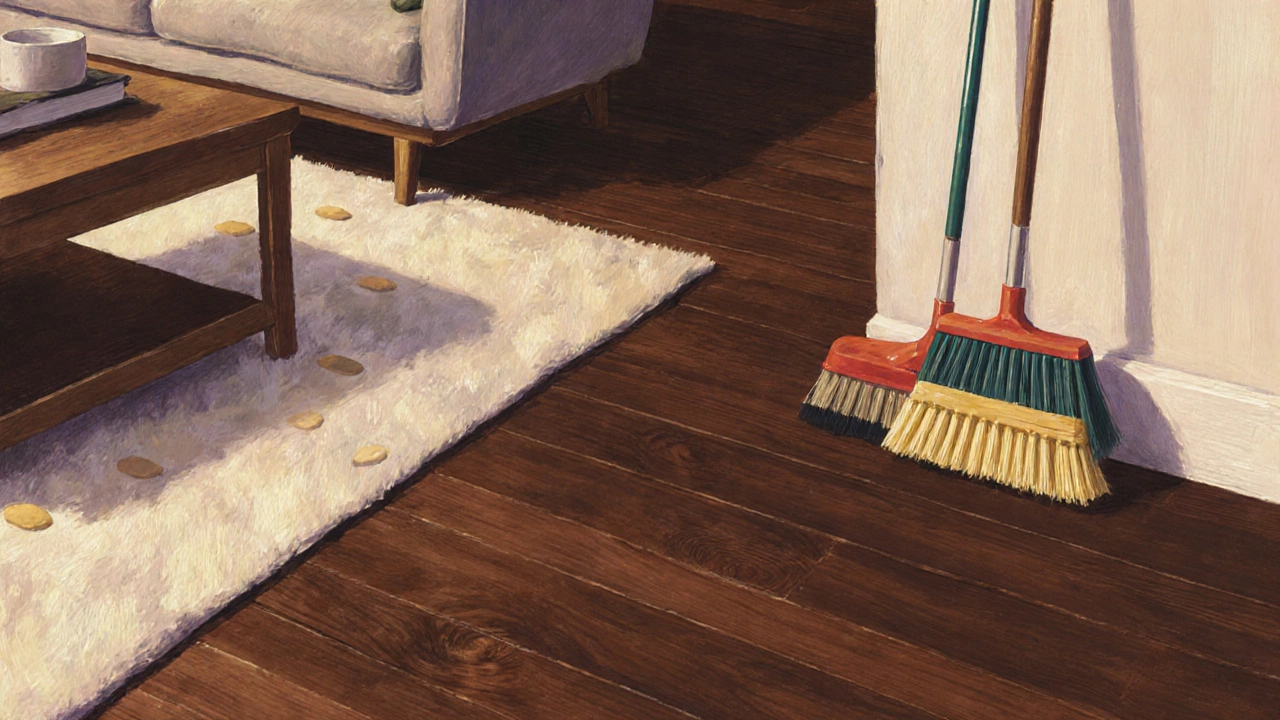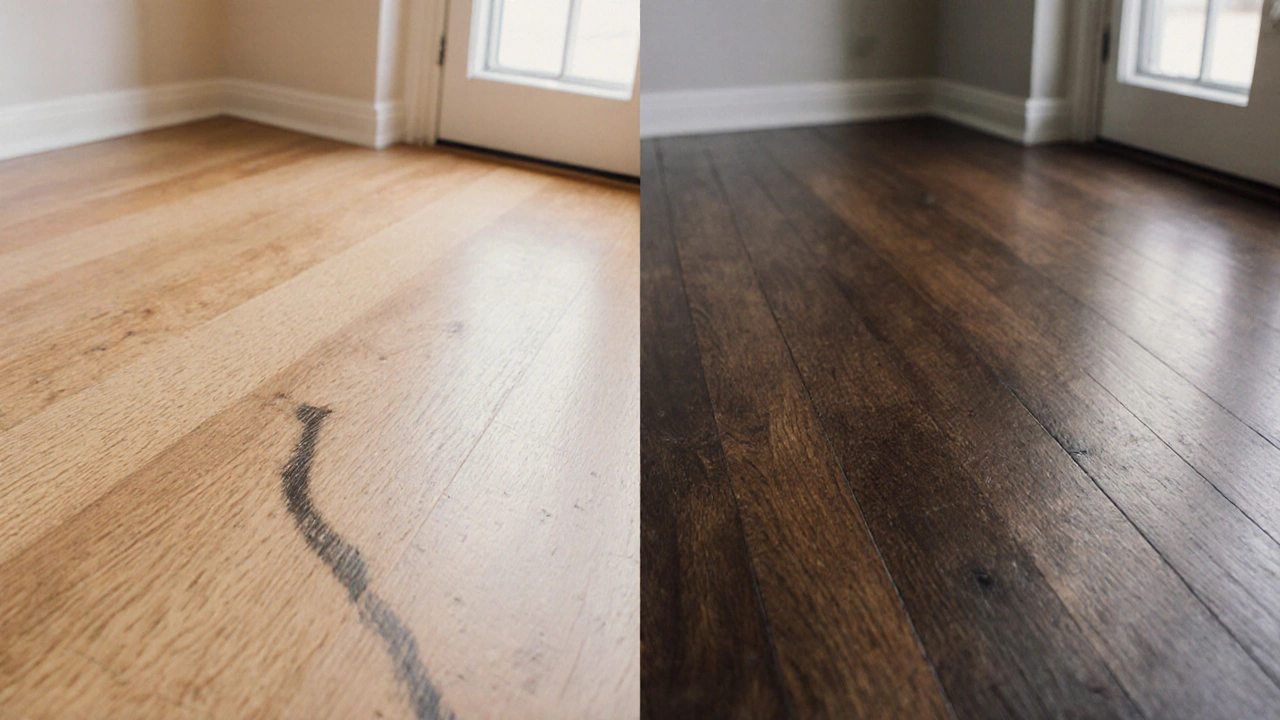Hardwood Floor Scratch Visibility Calculator
Find Your Best Floor Combination
Select your preferred floor tone and finish to see how visible scratches will be on your hardwood floor.
Pro Tip
When choosing hardwood floor color is a key factor that determines how visible scratches appear on your floor, most homeowners wonder which shade will keep their floor looking smooth for years.
Why Color Affects Scratch Visibility
Scratch visibility isn’t about the wood’s hardness alone; it’s about how light interacts with the surface. A shallow gouge reflects light differently than the surrounding finish. On a light‑toned floor such as natural oak, a dark mark stands out like a black line on white paper. Conversely, on a dark‑toned floor like espresso walnut, a light‑colored scratch can be just as noticeable.
Understanding scratch visibility the degree to which a mark can be seen helps you pick a shade that naturally masks everyday wear.
Light, Medium, or Dark Tones - What Works Best?
- Light tones (e.g., natural oak, maple) - Excellent at hiding dark marks caused by pet nails or dark furniture legs, but they highlight lighter scratches from foot traffic.
- Medium tones (e.g., honey oak, chestnut) - Offer a balance; they mask both light and dark marks better than extremes.
- Dark tones (e.g., walnut, espresso) - Conceal light scratches well, but any dust‑colored or gray surface wear becomes obvious.
If your home has high foot traffic lots of people moving around daily, medium‑toned shades tend to hide the most variety of marks without looking dated.

Finishes Matter More Than Color Alone
A finish creates the topmost protective layer. Two factors influence scratch perception:
- Gloss level - High‑gloss finishes reflect light sharply, making scratches pop. Matte or satin finishes diffuse light, softening the look of imperfections.
- Hardness of the coating - Modern aluminum oxide coating a very tough wear‑resistant layer (often marketed as “hard‑wear” finish) can actually reduce the depth of scratches, making them less visible regardless of color.
For the least visible scratches, pair a medium‑tone floor with a matte aluminum‑oxide finish. That combo offers the best camouflage and durability.
Species, Grain, and Stain - Hidden Players
Different wood species have distinct grain patterns that can disguise scratches:
- Oak has a prominent grain that can mask short lines.
- Maple features a finer grain, so scratches are more apparent unless the color is well‑chosen.
- Walnut offers a rich, deep hue that naturally hides lighter marks.
When you add a stain a coloring agent applied before finishing, you can tailor the exact shade to the grain, further reducing visible wear.
Practical Steps to Keep Scratches Invisible
- Lay area rugs in high‑traffic zones. This prevents direct wear on the wood.
- Use felt pads under all furniture legs. A single pad can stop a scratch that would otherwise cut through the finish.
- Adopt a gentle cleaning routine regular sweeping and damp‑mopping with pH‑neutral cleaners. Avoid abrasive scrubbers that grind the finish.
- Reapply a maintenance coat of aluminum‑oxide finish every 3‑5 years in high‑traffic homes.
- Touch up minor scratches with a wood‑tone filler that matches your floor’s stain.

Comparison of Popular Hardwood Floor Colors
| Color Shade | Typical Species | Finish Recommendation | Scratch‑Visibility Rating | Best For |
|---|---|---|---|---|
| Natural Light Oak | Oak | Matte poly, aluminum‑oxide | 3 | Low‑traffic homes, bright interiors |
| Honey Medium Oak | Oak | Satin poly, aluminum‑oxide | 5 | Family homes, mixed traffic |
| Chestnut | Cherry | Matte oil‑based | 4 | Traditional décor, moderate traffic |
| Walnut Dark | Walnut | Matte poly, aluminum‑oxide | 5 | Modern interiors, high traffic |
| Espresso | Maple or engineered | Satin poly, aluminum‑oxide | 4 | Contemporary lofts, heavy furniture |
Quick Cheat Sheet
- Goal: Hide both light and dark scratches.
- Best shade: Medium‑toned honey oak or walnut dark.
- Finish: Matte or satin with aluminum‑oxide hard‑wear.
- Maintenance: Regular sweeping, felt pads, periodic re‑coating.
- When to choose light: Low‑traffic homes or when you prefer a bright look.
- When to choose dark: High‑traffic, modern aesthetic, or you want to hide lighter wear.
Frequently Asked Questions
Do darker floors really hide scratches better?
Dark floors mask light‑colored scuffs well, but they can make dust‑gray wear stand out. Pairing a dark shade with a matte finish gives the most balanced concealment.
What finish should I avoid if I want low‑visibility scratches?
High‑gloss polyurethanes reflect light sharply, making any groove pop. Choose satin or matte, especially those with aluminum‑oxide reinforcement.
Can I change the color of an existing floor to reduce scratch visibility?
Yes. A professional refinishing can strip the old finish, apply a new stain (light, medium, or dark), and install a hard‑wear finish. It’s a cost‑effective way to refresh both look and durability.
Is aluminum‑oxide finish worth the extra expense?
For high‑traffic homes, the extra cost pays off. It extends the life of the floor and dramatically reduces the depth of scratches, keeping the surface looking new longer.
How often should I re‑coat my hardwood floor?
With a hard‑wear aluminum‑oxide finish, plan a top‑coat every 3‑5 years in busy households. Less busy homes can stretch to 7‑10 years.
